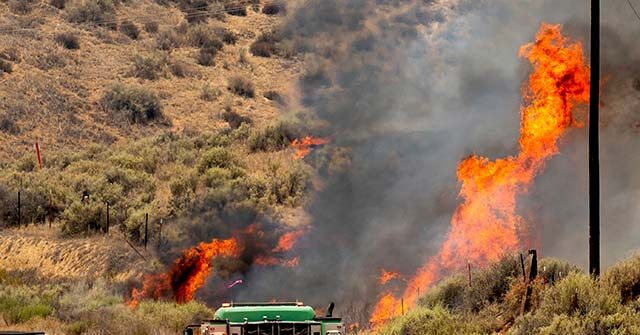Climate Change and Its Impact on Global Food Security
Climate change poses an unprecedented threat to global food security, affecting agricultural yields and food distribution systems. As extreme weather events become more frequent, policymakers and scientists are increasingly concerned about the implications for hunger and nutrition worldwide. This pressing issue demands urgent attention, especially as the United Nations estimates that nearly 828 million people are already facing hunger.
The Current State of Food Security
According to the Food and Agriculture Organization (FAO), the number of people experiencing food insecurity has risen dramatically over the past few years. The FAO’s latest report indicates that approximately 10% of the global population is undernourished, a stark increase from pre-pandemic levels. This trend is exacerbated by climate-related challenges such as droughts, floods, and shifting growing seasons.
“The effects of climate change on agriculture are already visible,” says Dr. Emily Santos, a leading agricultural economist at the University of California. “Farmers are struggling to adapt to unpredictable weather patterns, which directly impacts crop yields and food prices.” This volatility not only threatens food availability but also increases the risk of malnutrition, particularly in vulnerable populations.
Climate Change: A Multifaceted Threat
Climate change affects food security in several ways, including:
- Reduced Crop Yields: Changes in temperature and precipitation patterns can lead to lower agricultural productivity. For instance, staple crops like wheat and maize are particularly sensitive to temperature increases.
- Increased Pest and Disease Pressure: Warmer climates can expand the range of pests and diseases that affect crops, further diminishing yields.
- Supply Chain Disruptions: Extreme weather events can damage infrastructure, making it difficult to transport food from producers to consumers.
The impact on food prices is equally concerning. A report by the World Bank indicates that food prices have surged by 40% since 2020, largely due to supply chain issues exacerbated by climate events. This price increase disproportionately affects low-income households, often forcing them to sacrifice nutrition for survival.
Regional Perspectives on Food Security
The effects of climate change on food security are not uniform across the globe. For instance, sub-Saharan Africa faces severe challenges, with 282 million people currently experiencing hunger. In contrast, developed nations are experiencing rising food prices and supply chain disruptions but are better equipped to handle these challenges.
“In regions like Africa, the stakes are incredibly high,” explains Dr. Marcus Tunde, an environmental scientist specializing in agricultural systems. “The majority of people depend on rain-fed agriculture, making them highly vulnerable to climate fluctuations.” He emphasizes that adaptation strategies, such as improved irrigation systems and resilient crop varieties, are critical for mitigating these impacts.
Innovative Solutions for Sustainable Agriculture
To combat the challenges posed by climate change, several innovative solutions are emerging in the agricultural sector. These include:
- Climate-Resilient Crops: Developing genetically modified organisms (GMOs) that can withstand extreme weather conditions is crucial for maintaining food production.
- Agroecological Practices: Implementing sustainable farming practices that enhance soil health and biodiversity can improve resilience to climate change.
- Technological Advancements: Utilizing precision agriculture technologies can help farmers optimize resource use and adapt to changing conditions more effectively.
“Adopting these innovative practices can significantly enhance food security in the face of climate change,” notes Dr. Santos. “By investing in research and sustainable practices, we can create a more resilient agricultural system.”
Global Responses to Food Insecurity
Governments and international organizations are beginning to recognize the urgent need for coordinated responses to food insecurity driven by climate change. The United Nations’ Sustainable Development Goals (SDGs) emphasize the importance of achieving zero hunger by 2030, highlighting the need for collaborative action.
The FAO has initiated several programs aimed at improving agricultural resilience and food security, particularly in vulnerable regions. These initiatives focus on capacity building, providing farmers with resources and training to adapt to climate impacts. However, funding remains a significant barrier, with estimates suggesting that $350 billion is required annually to meet these goals.
The Role of Policy and Advocacy
Effective policy and advocacy are essential for addressing the complex interplay between climate change and food security. Policymakers must prioritize sustainable agricultural practices and invest in climate adaptation strategies. This includes enhancing access to technology, financing for farmers, and integrating climate resilience into national food security plans.
“It is critical for governments to act now,” asserts Dr. Tunde. “Failure to address these issues will not only exacerbate hunger but also undermine global stability.” Collaborative efforts between governments, NGOs, and the private sector will be necessary to create a comprehensive strategy for tackling food insecurity.
Conclusion: A Call to Action
The intersection of climate change and food security presents one of the most pressing challenges of our time. With millions already facing hunger, the need for immediate and coordinated action has never been more crucial. Policymakers, scientists, and the global community must come together to foster sustainable agricultural practices and invest in resilient food systems.
As we look to the future, the implications of inaction are dire. Without a concerted effort to address these challenges, the world could see a significant increase in hunger and malnutrition, particularly among the most vulnerable populations. To ensure a food-secure future for all, individuals can play a role by advocating for sustainable practices and supporting local agricultural initiatives. Together, we can create a sustainable food system that withstands the test of climate change.



